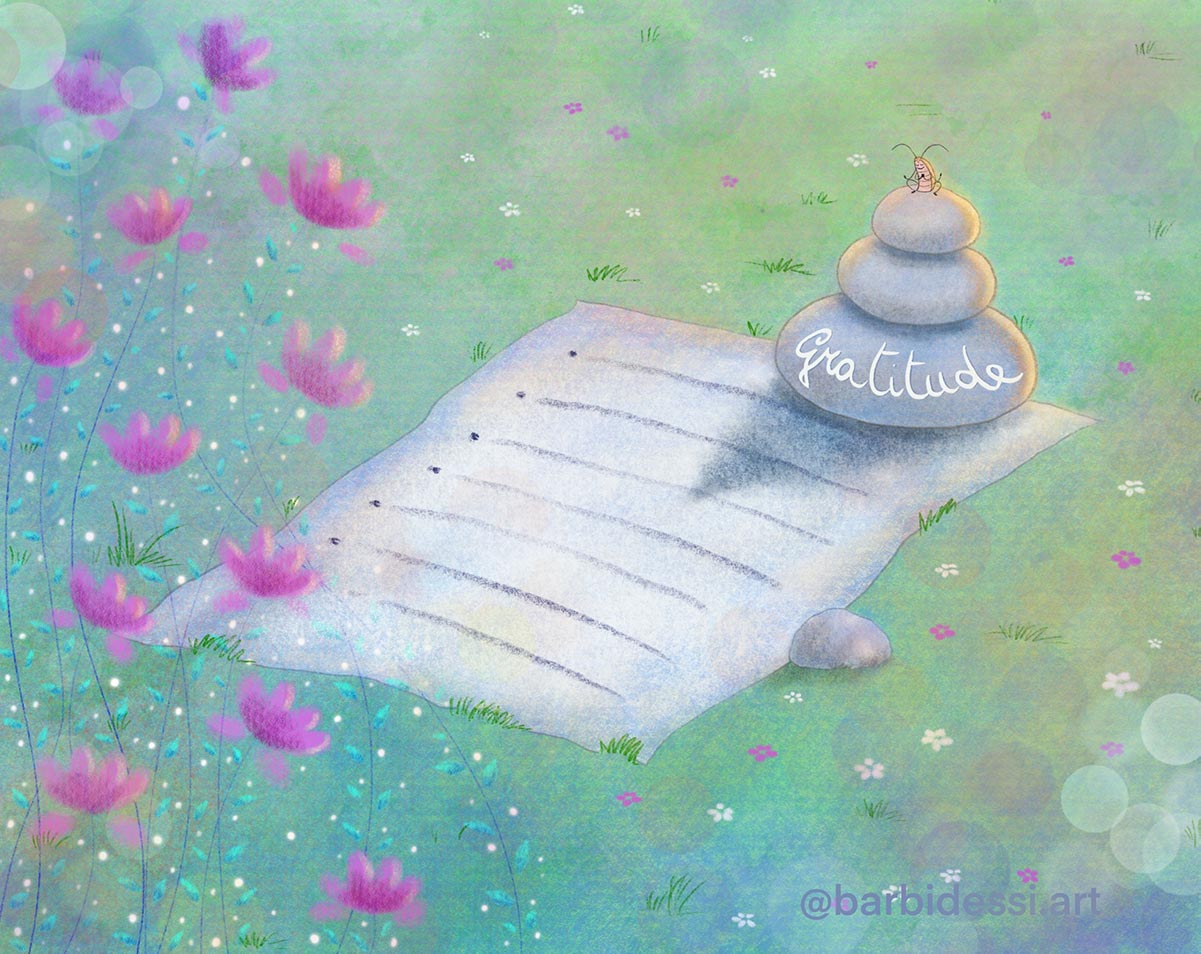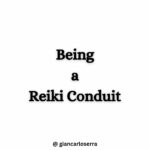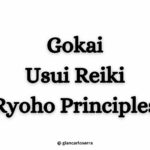
What is Gratitude?
It’s no secret that showing gratitude is good for you. As well as being backed by science, leaders such as the Dalai Lama are also big fans, so it’s no wonder that more of us are taking the time to be thankful for what we have in our lives.
One of the best ways to show thankfulness on a daily basis is to keep a gratitude journal.
While regular journaling has been proven to improve your well-being, making a point of jotting down all the things that you are grateful for can take the experience to a whole new level. Keeping a gratitude journal is easy and on the simplest level it involves making a note of the things that you are grateful for that day. You can decide how long your list is each day and how much detail you want to go into. The great thing is that it’s an easy habit to form and after a while, you are left with a collection of inspiring material to look back on when you are in need of a pick-me-up.
On a general scale, gratitude can be thought of as a mental state of mind: you are consciously grateful for things and people in your life. Gratitude can also be thought of as small acts of acknowledging what and for whom you’re grateful, such as calling up your best friend and telling them how much they mean to you. It’s an act of expressing your gratitude that many may resonate with.
You may have read or heard about gratitude in high volumes when it comes to positivity, health, and wellness. It has become one of the cornerstones of living a mindful life, and a tool used by many to achieve happiness, peace, and wellbeing.
According to Robert Emmons, a leading scientific expert on the topic, gratitude is “an affirmation of goodness. We affirm that there are good things in the world, gifts and benefits we’ve received“. This suggests that gratitude is more than just actions; it is an intention that we speak to ourselves that affirms the good things and people in our life.
Emmons goes on to explain that gratitude is also acknowledgement that the good things in our life often come from external sources. If you happen to believe in a higher power or are of a spiritual nature, gratitude becomes an offering of thanks to whatever you choose to believe in.
Gratitude is simply the appreciation of what is meaningful or valuable to oneself, it is an attitude of counting your blessings. It’s about feeling appreciative or thankful for what you have, rather than focussing on what you don’t have.
Gratitude is not about giving thanks indiscriminately, but about doing an exercise of observation and sincerity to identify all that for which we are deeply grateful. And it does not have to be extraordinary. In fact, it pays to be thankful for the simple things that we often take for granted.
Through the ages, philosophers and religious teachers have made a connection between gratitude and general wellbeing. Science has now confirmed this. Studies have found that gratitude is the best predictor of wellbeing out of any character strength; teenagers who feel grateful are less likely to abuse drugs and alcohol; grateful people have more self-control, which helps with healthy eating and quitting smoking.
Counting your blessings improves your self-esteem, because when you feel better about your life, you are less likely to compare yourself negatively with others.
Some people are naturally more grateful than others. But the good news is we can all become more grateful through practice.
Some of the benefits of a regular gratitude practice are:
When the brain feels gratitude, it activates areas responsible for feelings of reward, moral cognition, subjective value judgments, fairness, economic decision-making, and self-reference.
Many recent studies linked to positive psychology have suggested that people who are more grateful have a higher level of subjective well-being.
This results in several benefits, such as:
– Help you form healthy habits to take better care of yourself.
– Increase your resilience in times of stress by lowering stress hormones.
– Improve sleep quality.
– Reduce levels of depression, anxiety, and envy.
– Increase life satisfaction, vitality, hope, and optimism.
– Result in fewer symptoms of physical illness, and lead to more exercise.
– Improve job satisfaction, especially in a high-stress, demanding job.
– Help build long-term success in relationships and personal well-being.
– Increase altruism, generosity, and healthy social behaviour.
Gratitude journals
One of the best ways to show thankfulness on a daily basis is to keep a gratitude journal. A gratitude journal is a notebook or other space devoted specifically for thoughts of gratitude.
Instead of focusing on the darkness or what is lacking in your life, a gratitude journal helps you focus more on the joy, the light, the things that you already have.
There is no a right way, or a wrong way to keep a gratitude journal, however there is an effective way to do it – and this is when a gratitude journal becomes a regular and easy part of your lifestyle.
Famous People Who Use Gratitude Journals
Richard Branson carries a notebook everywhere and declares, “Being grateful feeds a positive attitude. Enjoy what you have achieved and the journey you’re on.”
And Nelson Mandela wrote diaries and letters throughout his 27-year incarceration in which he noted the small things in his daily life he was grateful for, such as having milk in his tea.
Tony Robbins, an American author, coach, speaker, and philanthropist known for his self-help books (Unlimited Power and Awaken the Giant Within) says about gratitude:
“The power of gratitude lies in its ability to completely change the way we see the world. We are conditioned to approach life from a place of scarcity – to compete with others and with ourselves. We believe there aren’t enough resources to go around. But when we get beyond scarcity and believe that the world is filled with abundance, we begin to think of life as a place to give, not to get.
When you are grateful, fear disappears and abundance appears. Once we appreciate everything we have, the law of attraction will bring even more abundance to us. The benefits of gratitude affect every area of our lives, from our relationships to our careers and our businesses. It makes us happier and more fulfilled. It makes us better partners.”
Tim Ferriss, The New York Times best-selling author, admits that taking notes and journaling are two activities that help brainstorm, focus and reduce anxiety. Currently Tim has 3 tools for relaxing note-taking: an insight notebook to brainstorm interesting goals and ideas; morning pages to write about whatever disturbs the peace of mind; and, finally, the Five Minute Journal to gain focus and appreciation.
Tim Ferriss, author of The Four-Hour Work Week and one of the most productive people in the world, has been using the Five Minute Journal for years in different capacities, and recently shared his tips on how to shift mindset to a state of appreciation by using the Five Minute Journal.
“This might seem cheesy, but I use the Five Minute Journal for improving focus, execution and appreciation.” – Tim Ferriss
Oprah Winfrey and Ariana Huffington keep regular gratitude journals.
Jim Rohn wrote “Always start with gratitude; be thankful for what you already have and see the miracles that come from this one simple act.”
The world-famous Dale Carnegie is an American author, lecturer, and a developer of renowned courses in public speaking, salesmanship, corporate training, self-improvement, and interpersonal skills. His most notable pieces of work “How to Win Friends and Influence People”, a best seller, and “How to Stop Worrying and Start Living.” He once said: “Remember, happiness doesn’t depend upon who you are or what you have; it depends solely upon what you think. So start each day by thinking of all the things you have to be thankful for.”
Napoleon Hill was an American self-help author. He is best known for his book Think and Grow Rich (1937), which is among the 10 best-selling self-help books of all time. He wrote this following Gratitude Prayer:
“I give thanks daily, not for mere riches, but for wisdom with which to recognize, embrace, and properly use the great abundance of riches I now have at my command. I have no enemies because I injure no man for any cause, but I try to benefit all with whom I come in contact by teaching them the way to enduring riches. I have more material wealth than I need because I am free from greed and covet only the material things I can use while I live.“
Tips for a successful Gratitude Journal
While regular journaling has been proven to improve your well-being, making a point of jotting down all the things that you are grateful for can take the experience to a whole new level. Keeping a gratitude journal is easy and on the simplest level it involves making a note of the things that you are grateful for that day.
You can decide how long your list is each day and how much detail you want to go into. The great thing is that it’s an easy habit to form and after a while, you are left with a collection of inspiring material to look back on when you are in need of a pick-me-up.
The following are some success tips for how to write a gratitude journal:
1. Make it a habit. According to a 2009 study published in the European Journal of Social Psychology, it takes 66 days for a new behaviour to become automatic. The easiest way to create a new habit is to tie into another established habit like a routine. Set yourself up for success by placing the journal in an accessible place that will serve as its own reminder while you’re creating the habit. You can set an alarm, or create a ritual around it.
2. Choose small things you are grateful for. You can write down many things you are grateful for, focusing on the simple basic moments, such a lovely sunny day, being able to buy food at the supermarket, enjoying the company of a good friend.
3. Mix different ideas. Write about something different every time. Even if you want to express gratitude for the same person or a recurring event, write a different reason that you are grateful.
4. Be concise. Experiment what works for you. If you’re feeling thankful for multiple things then don’t hesitate to write about them. Listing 3-5 items you are grateful for is more than enough.
5. How Often. You do not need to write every day, although I prefer this to be a daily ritual. A study found that writing just 3 times a week is more powerful than if you were to write every day.
There isn’t a right time of day to write in your journal; writing at different times can have different benefits. Again, just experiment.
“Develop the ability to reflect. Just a few minutes is all you need. Do the same thing at the end of a week. Who did you see how did it feel what did you learn and what did you change? Take half a day at the end of the month. Go over what you learned saw and reinforce it Take a weekend at the end of the year to reflect”
Jim Rohn
Steps
This is how to start a gratitude journal:
Step 1 – Pick a journal that you like having around, that you can see. These days there are apps that can help you keeping a digital journal. I personally prefer something that you can see and touch.
Step 2 – Decide when you are going to write on your gratitude journal and stick to it. If it is every day, decide the time of the day when you are going to do it. It can take 5 minutes, do not feel that you have to do it, because this can be counterproductive. Just remind yourself why you are doing it and the benefits resulting from writing a gratitude journal.
Step 3 – Find a quite place to write where you can be present. Even better it this is the same place you use all the times. You can build a ritual around it: candles, tea, music. It can be a space inside or outside your house.
Step 4 – Write down the date, 5 things you are grateful for and the reasons why you are grateful. Instead of writing only “I am grateful for my dog”, you can be specific and write “I am grateful for my dog because we spend a wonderful time together, she keeps me company when I am sad and she pushes me to go out and exercise when I do not want to.”
Step 5 – Feeling is the secret. It is not just about writing down the different items and the reasons why you are grateful for those things in your life. The most important element in writing a gratitude journal is to feel what you are writing about. You need to use your imagination. You can close your eyes after each sentence and feel the reasons why you are grateful.
“My third way of praying is simply to feel thankful. If I want something, either for myself or another, I immobilize the physical body, then I produce the state akin to sleep and in that state just feel happy, feel thankful, which thankfulness implies realization of what I want.”
“I assume the feeling of the wish fulfilled and with my mind dominated by this single sensation I go to sleep. I need do nothing to make it so, because it is so. My feeling of the wish fulfilled implies it is done.” – Neville Goddard – Core Lecture #4
Ideas of Gratitude Entries
– What skills or abilities are you thankful to have?
– Write about a person in your life that you’re especially grateful for and why.
– What is there about a challenge you’re experiencing right now that you can be thankful for?
– What do you do to relax and feel better?
– List five body parts that you’re grateful for and why.
– What about the city you live in are you grateful for?
– What materialistic items are you most grateful for?
– Write about a habit that improves your lifestyle.
– Who has done something this week to help you or make your life easier and how can you thank them?
– Write about a difficult skill that you learned with patience and persistence.
– What elements of nature are you grateful for and why?
– What do others appreciate about you?
– What cheers you up when you’re upset?
– What you have recently purchased that adds value to your life.
– Write about a place that makes you want to travel there again.
– What book did you read that had the most impact on your life?
Each gratitude journal prompt may have significance that you can only discover.
Each item, person, or experience will hold a special place in your heart. The important part of gratitude journaling is to make it a habit. It comes with practice and sometimes can even be confusing.
Still, the benefits are immense.
Post written by Giancarlo Serra.
Giancarlo is a fully qualified Spiritual Healer, Reiki Master, Hypnotherapist and Past Life Regression Therapist.
He is a Reiki Master Teacher member of the UK Reiki Federation and registered with the Complementary & Natural Healthcare Council, Federation of Holistic Therapists, the Spiritual Regression Therapy Association and the General Hypnotherapy Register. Read more.
Illustration by Barbara Dessì.
Barbara is a children’s book illustrator. She believes in the importance and effectiveness of art as a communicative, educational and therapeutic tool. She loves illustrating books that have a deep meaning and that can help children (and adults) to feel better about themselves and help them connect with nature, animals and the beauty of the world.
You can contact her and see more of her art here:
https://childrensillustrators.com/bardessi/about
https://www.instagram.com/barbidessi.art/


















